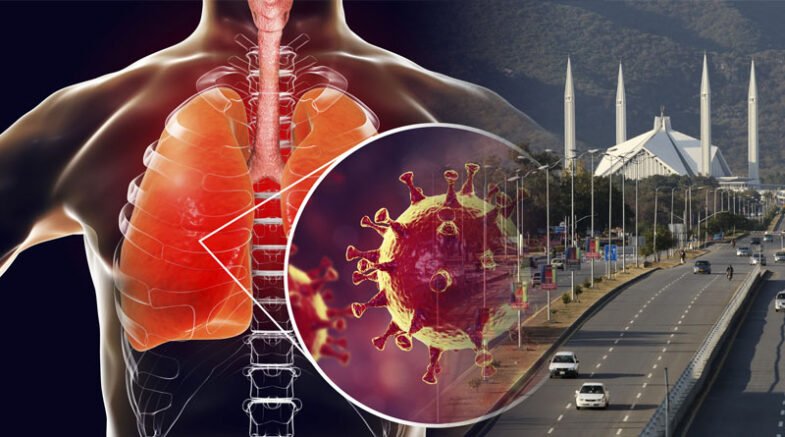ARDS begins with lung failure but quickly spreads to other organs such as the heart, liver, kidneys, and brain due to hypoxic ischemic damage throughout the body.

The healthcare facilities in Islamabad and Rawalpindi have been inundated with patients suffering from serious respiratory tract infections such as influenza, pneumonia, and acute respiratory distress syndrome (ARDS), which can be fatal.
Pneumonia and ARDS are the more fatal forms of respiratory tract infections that claim a significant number of lives in the region each year, and many health experts believe this is because the majority of our population does not take precautions to avoid them.
According to studies, severe flu and pneumonia leading to ARDS are much more lethal. Even when admitted to a well-equipped hospital, one out of every three patients with ARDS dies. Patients who are not treated may die.
According to data the ARDS claims well over 200 lives each year in public sector hospitals in the Twin Cities during the months of December and January. According to studies, ARDS occurs when the lungs become inflamed as a result of an infection, causing fluid from nearby blood vessels to leak into the tiny air sacs in the lungs and making breathing extremely difficult.
In the case of ARDS, less oxygen enters the bloodstream, depriving the organs of the oxygen they require to function. Apart from other infections and medical conditions, pneumonia and severe flu can cause inflammation of the lungs.
There are numerous other causes of ARDS, such as severe infections, sepsis, pancreatitis, burns, and so on, but respiratory infections are the most common in winter.
ARDS begins with lung failure but quickly spreads to other organs such as the heart, liver, kidneys, and brain due to hypoxic ischemic damage throughout the body. According to experts, ARDS is caused by breathing in harmful substances such as dense smoke and chemical fumes.
As respiratory tract infections have already taken the form of an outbreak, the number of patients presenting to healthcare facilities in the region with pneumonia and ARDS is constantly on the rise.
According to medical experts, approximately 20 to 30% of patients suffering from serious respiratory tract infections such as pneumonia and ARDS may require ventilator support, while 70% may be cured after hospitalization. Experts advise patients who have a cough, fever, lethargy, and thick, viscid sputum for over three days should undergo a chest X-ray to avoid complications of the infection.
The most lethal and dangerous complication of pneumonia is ARDS, a rapidly developing condition in which a patient with a chest infection is unable to maintain oxygenation levels due to lung dysfunction. The accumulation of fluid and secretions in airspaces impedes oxygen transfer to the blood.
The majority of ARDS patients reported each winter are those suffering from flu, pneumonia, chest infections, and other illnesses. According to studies, ARDS patients suffer from severe air hunger and suffocation, which begin suddenly and progress rapidly. The fluid in both lungs clogs the airways, drowning patients in their own secretions.
According to experts, the only way to avoid deaths from severe pneumonia and ARDS is to have a high index of suspicion, early diagnosis, and immediate treatment in an intensive care unit. A little data available in Pakistan shows that mortality after developing ARDS ranges from 90 to 100 percent in patients who do not have access to ventilator support.
It has also been discovered that the major cause of death in the majority of cases is late presentation to the ICU, whereas the majority of patients who died of ARDS had asthma, COPD (Chronic Obstructive Pulmonary Disease), and diabetes, along with critical complications.
